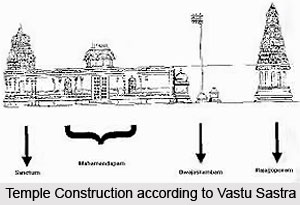 In the modern world of today, knowledge of Science and Nastikavada is increasing rapidly. At the same time, the construction of temples, religious associations, Pithas or centres of spiritual teachings and of astrology are also growing, as modern science can provide man only with physical comfort and not spiritual happiness. More and more people are getting interested in the scriptures and philosophy as they are struggling for the achievement of spiritual happiness and peace.
In the modern world of today, knowledge of Science and Nastikavada is increasing rapidly. At the same time, the construction of temples, religious associations, Pithas or centres of spiritual teachings and of astrology are also growing, as modern science can provide man only with physical comfort and not spiritual happiness. More and more people are getting interested in the scriptures and philosophy as they are struggling for the achievement of spiritual happiness and peace.
There is a close relationship between the planers and idols according to ancient Hindu tradition. Planet (graha) means that which receives. Idol means that which transmits power that has been received from Graha. According to Hindu Astrology, the nine planets rule the eight directions. It is proved that each idol, which receives power from its concerned planet, radiates only the concerned directional power. The combined power of the idol in the eight directions is called Akhilandeswari or Adi-para-sakti.
The shape of the Adi-para-sakti is that of an elliptical atom or dirghanda-vritta. The shape of each idol, as ruler of a particular direction, is that of one sub-atom. The rectangle and square in geometry have an important place in Vastu Shastra. The atom-shaped ellipse can be inscribed in a rectangle. So the rectangle is the form of Asta-padma or Octagonal lotus, and the sign of the power of eight directions. The square is the form of sub-atom, in the Octagonal lotus, or asta-dala-padma and it is the sign of power of one direction. As per the above theory, it is proved that the house-site which is the shape of the complete Octagonal lotus and the sign of an atom should be in the form of a rectangle.
The temple site which is the shape of only a petal of the Octagon and the sign of only a sub-atom should be in the form of a square. Site area or Aydma means the house-site or temple-site which is correctly marked as per the mariner`s compass. Both the sanctum sanctorum of the temple, and the Mandapa constructed before it, should be in the shape of squares. Then only does the temple completely radiate the sub-atom power of that direction.
According to Vastu Shastra the sanctum sanctorum should be in the shape of a square, inner length and breadth of which is six feet. The width of the wall of the sanctum sanctorum must be two feet each only, and it should be the same on all the four sides. The construction of a Mandapa before the sanctum sanctorum is a must.
The whole temple, i.e. the sanctum sanctorum and the Mandapa, should be constructed in the correct direction using magnetic compass. The idol of 6 feet height should be installed in the middle of the sanctun sanctorum or garbhagriha. If the height of the idol is less, the pedestal should be raised sufficiently to obtain this height. The Dhwaja Stambha should be perpendicular and directly opposite the idol. The base of the idol and the Dhwaja should be of equal height. At the same height as the middle point between the eyebrows of the idol, there should be carved on the Dhwaja three vertical marks or the middle point between the eyebrows of a bowing man. A line making an angle of 22.5 degrees with the normal sight line of the idol should cut exactly the top of the Dhwaja. Thus, the height of Dhwaja is fixed. A hole should be made in the roof of the Mandapa where the line of the above angle touches the roof. The middle point between the eyebrows of the idol, the hole in the roof and the top of the Dhwaja should be in the same line. The above angel line when extended should reach the top of the Kalasa the Gali-Gopuram. Thus, the Gali-Gopuram should be constructed at a convenient distance. As the earth axis makes an angle of 22 degrees with the Sun, the small hole, the top of the Dhwaja and the top of the Gali-Gopuram should be in a line making an angle of 22 degrees with the normal sight line of the idol for the correct powerful radiation of the directional power.
The idol of God enjoys sixteen phases completely when the temple is constructed in the right direction. So the idols should be installed exactly towards the middle point of the concerned direction. Even if the idol is installed to the left side (ascending direction) of the mid-point of the concerned direction, nothing happens. But is the idol is installed to the right side of the mid-point (descending direction) of the concerned direction, the installation is completely useless and the idol has no power at all. In the former situation the Sun`s directional power reaches the middle point, between the eye-brows of the idol, which relates its power-on the Prasadam. In the latter situation even if the Sun`s directional power reaches the mid-point between the eye-brows of the idol, it is of no use as the idol does not radiate its power on the Prasadam.
Finally in conclusion it has been said that unless the principles of Vastu are followed in the interiors of the temple the lord of the temple will not receive regular worship and the donors of the temple will suffer from illness.




















